Crispy banh mi baguettes, grand colonial facades and chattering Francophone schoolchildren are lingering reminders of the French presence that once dominated Vietnam, but there are darker legacies, too — in the notorious prisons that enforced foreign rule and memorials to those slain fighting for independence.
As Vietnam yesterday marked the 80th anniversary of the declaration of independence from its European ruler with a grand parade, 24-year-old Huynh Nhung traveled to the capital, Hanoi, to take it all in.
“There are both good and bad sides,” she said, touring Hoa Lo Prison — now a memorial partly dedicated to France’s brutal treatment of Vietnamese colonial dissidents.
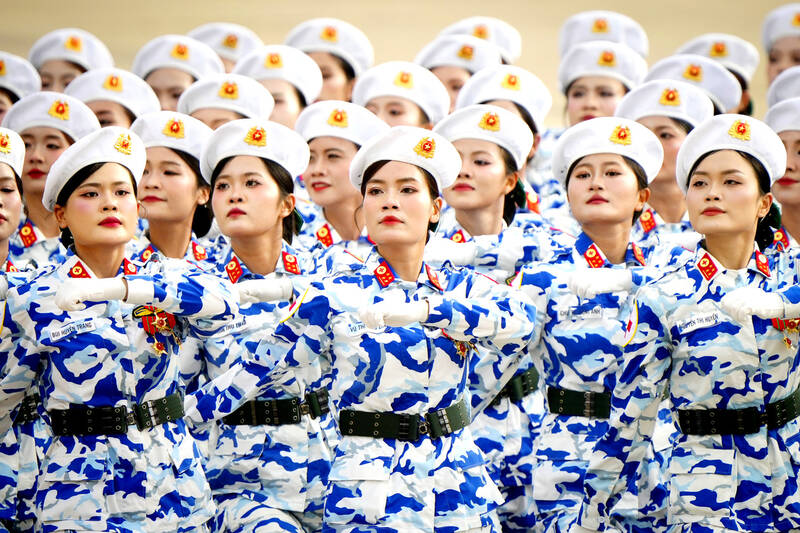
Photo: AP
“France left a lot of pain for the country,” she said, a few days before the event.
However, when 40,000 soldiers and civilians begin marching, her thoughts would turn away from France’s “story of the past” and toward Vietnam’s eight decades of self-definition.
“Vietnam doesn’t need to cling to another country or rely on another power to lead the nation,” she said.
French Indochina was officially established in 1887 and eventually encompassed all of modern-day Vietnam, as well as neighboring Cambodia and Laos.
A communist insurgency led by Ho Chi Minh ousted the colonial administration and declared independence on Sept. 2, 1945.
Some French influence remains woven into the fabric of Vietnam’s daily life.
Banh mi — a delicacy fusing the imported French baguette with local Asian meat and vegetable fillings — is one of the nation’s most popular snacks, but 43-year-old Nguyen Thi Van, hawking the sandwiches in Hanoi’s “French Quarter,” said she “never really thought about the origins” of the cuisine.
“It’s just always been there since my childhood,” she shrugged.
The capital’s streets, lined with colonial mansions that once housed French administrators, are now festooned with the red flags of independent communist Vietnam.
When soldiers goose-step down them, Carlyle Thayer — emeritus professor at Australia’s University of New South Wales — anticipates little thought would be spared for France.
“I expect Vietnam’s leaders will express pride in Vietnam’s achievements over the last eight decades,” he said, predicting “minimal reference to French colonialism.”
There are still pockets of French influence in Vietnam, enough to tantalize some schoolchildren into imagining a Francophone future.
Enrolled in French language classes, 10-year-old Linh Anh said she dreams of being a French teacher. Her classmate Ngoc Anh wants to be an architect “like Monsieur Eiffel.”
Of Vietnam’s 100 million people, about 650,000 still speak French — mostly those who lived through the end of the colonial era or were born shortly after independence — and about 30,000 schoolchildren study the language, according to official data.
Hanoi’s Doan Thi Diem School was the first in the capital to introduce French at elementary level.
“French is a language of culture and diplomacy,” 28-year-old teacher Luu Thanh Hang said. “It helps students, children, develop their critical thinking and their creativity.”
However, the language might be more a marker of cultural prestige than an economic asset, with few Francophone jobs in Vietnam and little migration to France.
During his visit in May, French President Emmanuel Macron inked billion euro contracts, and presented his nation as a “sure and reliable friend,” but Vietnam has proven more interested in “bamboo diplomacy” — a flexible approach aiming to steer good relations with all nations, including superpowers the US and China.
On the streets of Hanoi, spectators gathered for the parade set to celebrate Vietnam above all else.
“Everyone who comes here shares that patriotic spirit,” said 20-year-old Vu Thi Ngoc Linh, running a photo booth where attendees posed for souvenir snaps. “I feel that every customer feels very proud to be a child of Vietnam.”
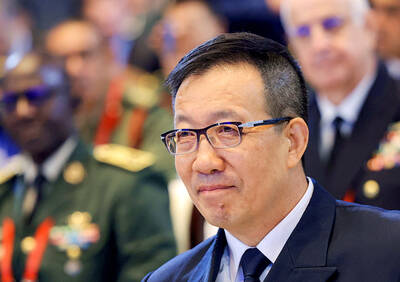
BEIJING FORUM: ‘So-called freedom of navigation advocated by certain countries outside the region challenges the norms of international relations,’ the minister said Chinese Minister of National Defense Dong Jun (董軍) yesterday denounced “hegemonic logic and acts of bullying” during remarks at a Beijing forum that were full of thinly veiled references to the US. Organizers said that about 1,800 representatives from 100 countries, including political, military and academic leaders, were in Beijing for the Xiangshan Forum. The three-day event comes as China presents itself as a mediator of fraught global issues including the wars in Ukraine and Gaza. Addressing attendees at the opening ceremony, Dong warned of “new threats and challenges” now facing world peace. “While the themes of the times — peace and development —
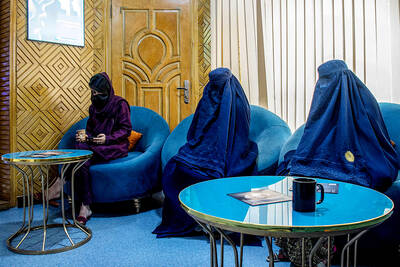
Decked out with fake crystal chandeliers and velvet sofas, cosmetic surgery clinics in Afghanistan’s capital are a world away from the austerity of Taliban rule, where Botox, lip filler and hair transplants reign. Despite the Taliban authorities’ strict theocratic rule, and prevailing conservatism and poverty in Afghanistan, the 20 or so clinics in Kabul have flourished since the end of decades of war in the country. Foreign doctors, especially from Turkey, travel to Kabul to train Afghans, who equally undertake internships in Istanbul, while equipment is imported from Asia or Europe. In the waiting rooms, the clientele is often well-off and includes men
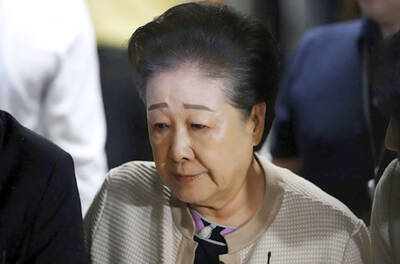
BRIBERY ALLEGATIONS: A prosecutor said they considered the risk of Hak-ja Han tampering with evidence to be very high, which led them to seek the warrant South Korean prosecutors yesterday requested an arrest warrant for the leader of the Unification Church, Hak-ja Han, on allegations of bribery linked to the country’s former first lady and incitement to destroy evidence. The move came a day after the 82-year-old was questioned over her alleged role in bribing former first lady Kim Keon-hee and a lawmaker. Founded in 1954 by her late husband, Sun Myung Moon, the Unification Church has long been the subject of controversy and criticism, with its teachings centered on Moon’s role as the “second coming” and its mass weddings. Followers are derisively referred to as “Moonies.” However, the church’s
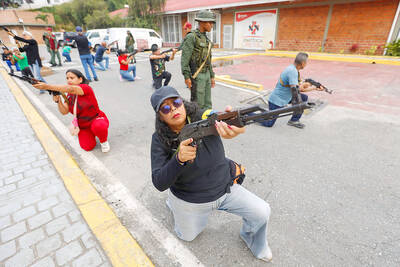
Venezuela on Saturday organized a day of military training for civilians in response to the US deployment in the Caribbean, and amid new threats from US President Donald Trump. About a month ago, Washington deployed warships to international waters off Venezuela’s coast, backed by F-35 jets sent to Puerto Rico in what it calls an anti-drug and anti-terrorism operation. Venezuelan Minister of Defense Vladimir Padrino Lopez has accused Washington of waging “undeclared war” in the Caribbean, after US strikes killed over a dozen alleged drug traffickers off his country’s coast. Caracas also accused the US of seeking regime change, and